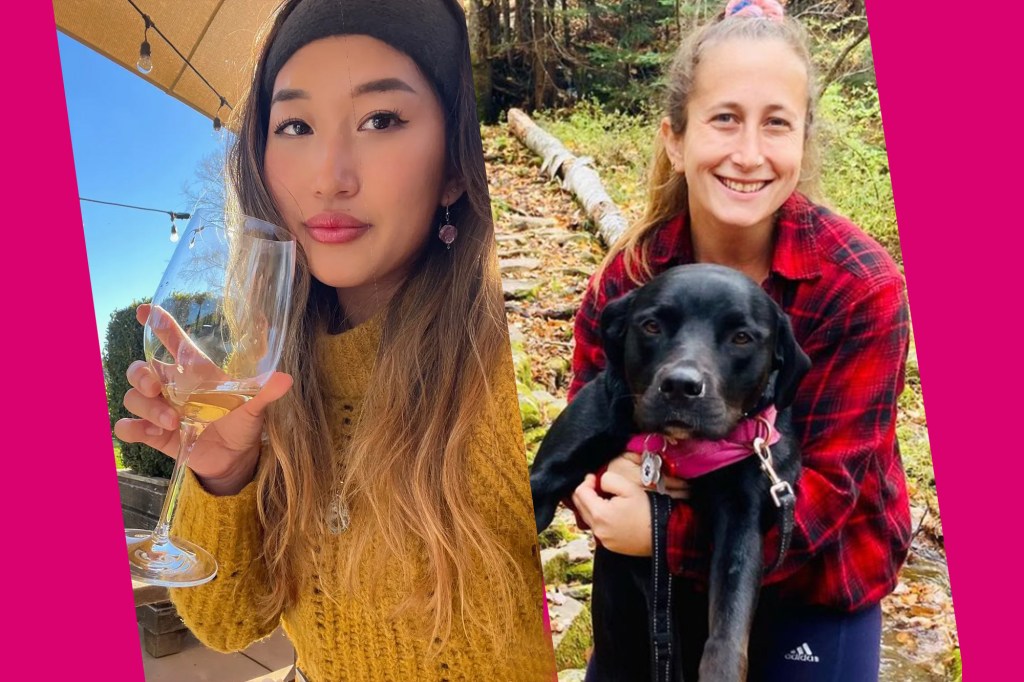Lifestyle
Bernard Hill, who starred in 'Titanic' and 'The Lord of the Rings,' dies at 79

Bernard Hill arrives on the red carpet at a Leicester Square cinema for the Royal Performance of The Hobbit: An Unexpected Journey on Dec. 12, 2012.
Joel Ryan/Joel Ryan/Invision/AP
hide caption
toggle caption
Joel Ryan/Joel Ryan/Invision/AP

Bernard Hill arrives on the red carpet at a Leicester Square cinema for the Royal Performance of The Hobbit: An Unexpected Journey on Dec. 12, 2012.
Joel Ryan/Joel Ryan/Invision/AP
English actor Bernard Hill, best known for roles in Titanic and The Lord of the Rings, died on Sunday. He was 79.
Hill’s agent, Lou Coulson, confirmed his death to NPR. Coulson said Hill was with his fiance and son at the time.
Hill’s acting career spanned over 50 years both onscreen and on-stage. His latest role aired Sunday as the main character’s father in the BBC show The Responder.
Lindsay Salt, the director of BBC drama, described Hill as a one-of-a-kind actor.
“His long-lasting career filled with iconic and remarkable roles is a testament to his incredible talent,” Salt said in a statement.

One of Hill’s most memorable performances was in the 1997 Oscar-winning film Titanic. Playing Captain Edward John Smith, Hill showcased a chilling combination of shock and guilt as water gushed into the ship’s wheelhouse.
In The Lord of the Rings trilogy, Hill showed his versatility as King Théoden of Rohan. In one scene, Hill’s character is weak and decrepit. In another, he is leading a cavalry charge with the iconic words “Arise! Arise! Riders of Théoden!”
Hill, a native of Manchester, England, was also praised for his role as Yosser Hughes in Boys from the Blackstuff, a British show about a group of men navigating Liverpool during a time of high unemployment and a struggling economy.
Over the decades, Hill received several nominations and awards for his performances, including an award from the Screen Actors Guild for his role in The Lord of the Rings: The Return of the King.

Lifestyle
'Wait Wait' for May 18, 2024: With Not My Job guest Maya Hawke

This week’s show was recorded at the Studebaker Theater in Chicago, with guest host Alzo Slade, judge and scorekeeper Bill Kurtis, Not My Job guest Maya Hawke and panelists Negin Farsad, Adam Burke and Faith Salie. Click the audio link above to hear the whole show.
Jamie McCarthy/Getty Images

Jamie McCarthy/Getty Images
Who’s Bill This Time
Joe Vs The Volcano; Mr. Cheese’s Last Tour; Interoffice Romance
Panel Questions
A New Irish Goodbye
Bluff The Listener
Our panelists tell three stories of well-meaning gifts that didn’t quite work, only one of which is true.
Not My Job: We quiz singer and actor Maya Hawke on birdwatchers
Musician and actor Maya Hawke had a breakout year 2019, when she landed the role of Robin in Stranger Things and released her first two singles. She’s gonna do it all again in 2024, with a new album called Chaos Angel, a role in Pixar’s Inside Out 2, and a new movie called Wildcat, which just so happens to be directed by her dad, Ethan.
Panel Questions
The Quest For a New Word For Quest; A Graduation Situation
Limericks
Bill Kurtis reads three news-related limericks: Another Reason To Go Outside; How To Get Some Free Bubbly; The Perfect Conversation Partner
Lightning Fill In The Blank
All the news we couldn’t fit anywhere else
Predictions
Our panelists predict, now that they’re retiring their animatronic band, what’s next for Chuck E. Cheese?
Lifestyle
Take an epic trip along the West Coast in 2024. Here are the top 10 places to visit now

I couldn’t help it. In the course of scouting out great adventures for West Coast 101 — our new guide to essential destinations in Baja, California, Oregon, Washington and British Columbia — I found myself compiling a personal top 10.
I’ll get to that list shortly. But first, an honorable mention.
Even if you’ve never seen “The Big Lebowski,” you’ve probably heard someone mention the rug that tied Lebowski’s room together. Well, Harris Ranch does that for California.
This I-5 stop for food, gas, lodging and bathrooms (not necessarily in that order) might not make anyone’s bucket list. And I’ll admit that if the wind blows the wrong way, it smells like cattle. But if you’re driving north-south through the San Joaquin Valley, which just about every Californian does sooner or later, you’re going to need to stop somewhere.
Harris Ranch faithfully awaits, 184 miles south of San Francisco and 200 miles north of L.A. City Hall, the pride of Coalinga. Over the years, I’ve pumped gas at its Shell station, slept in its comfortable hotel (no resort fee or room tax), conducted interviews in its Horseshoe Lounge, lingered over breakfast in its Ranch Kitchen (excellent) and grabbed a sandwich from its Express BBQ (adequate). I’ve even bought bonsai from Hyo Kim, who peddles delicately coiffed junipers, olive and pine trees ($25-$500) from a stand on the dirt shoulder across the street.
I’m not saying cattle ranches are good for the planet’s future — definitely not. But I’m just realizing that for about 45 years now, Harris Ranch has been the rug tying together my adventures in the vast living room that is our West Coast.
Your rug might be different. After all, these lists are subjective.
Of our 101 best West Coast experiences, these 10 resonate most for me. I’d recommend them to just about any California newbie and I’d grab at a chance to visit them again — some for basic beauty, others for the stories they tell or the memories they tie together.
10. Rady Shell, San Diego
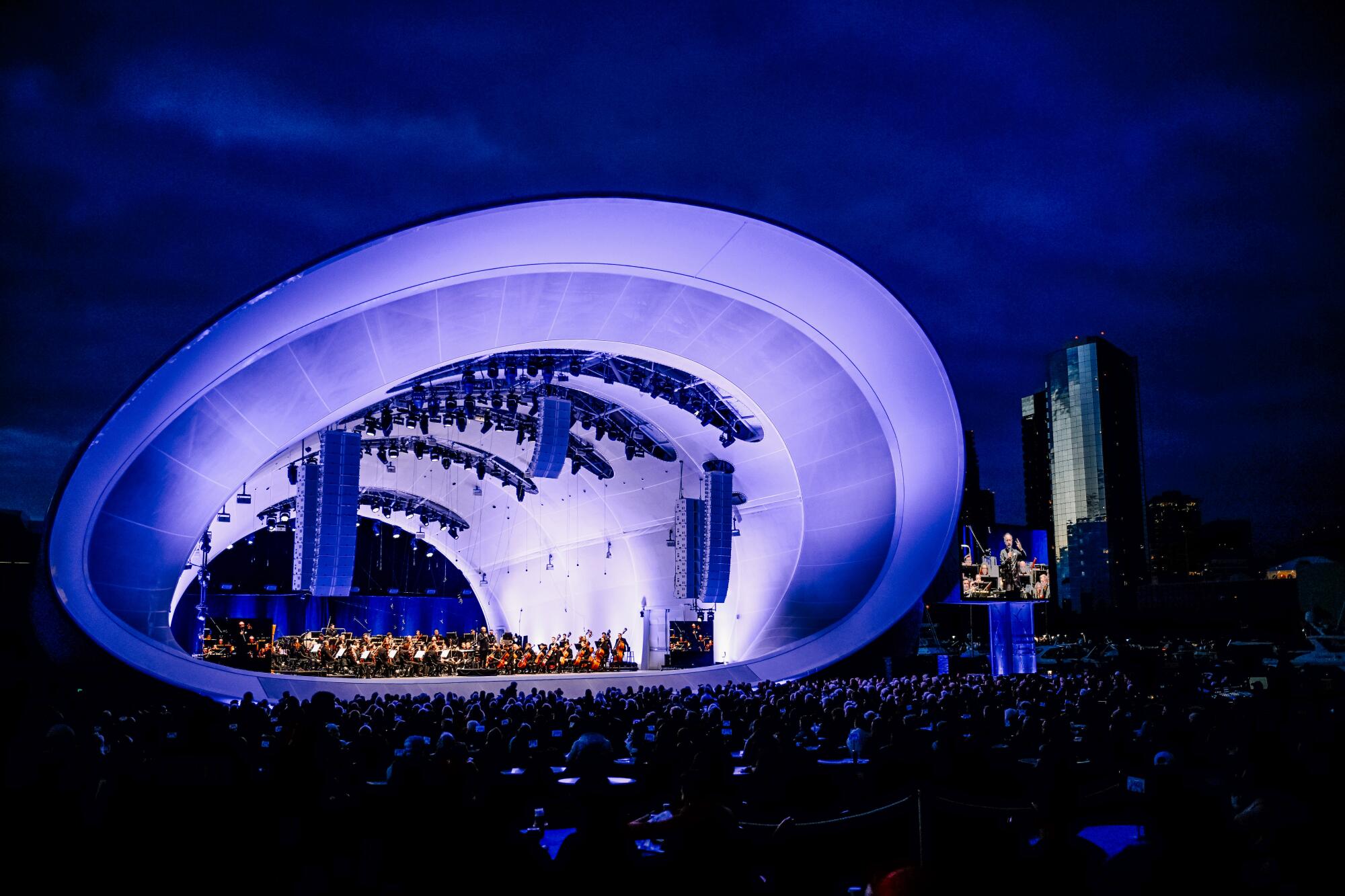
Symphony goers watch a performance of the San Diego Symphony at the Rady Shell April 12, 2024, in San Diego.
(Denis Poroy / For The Times)
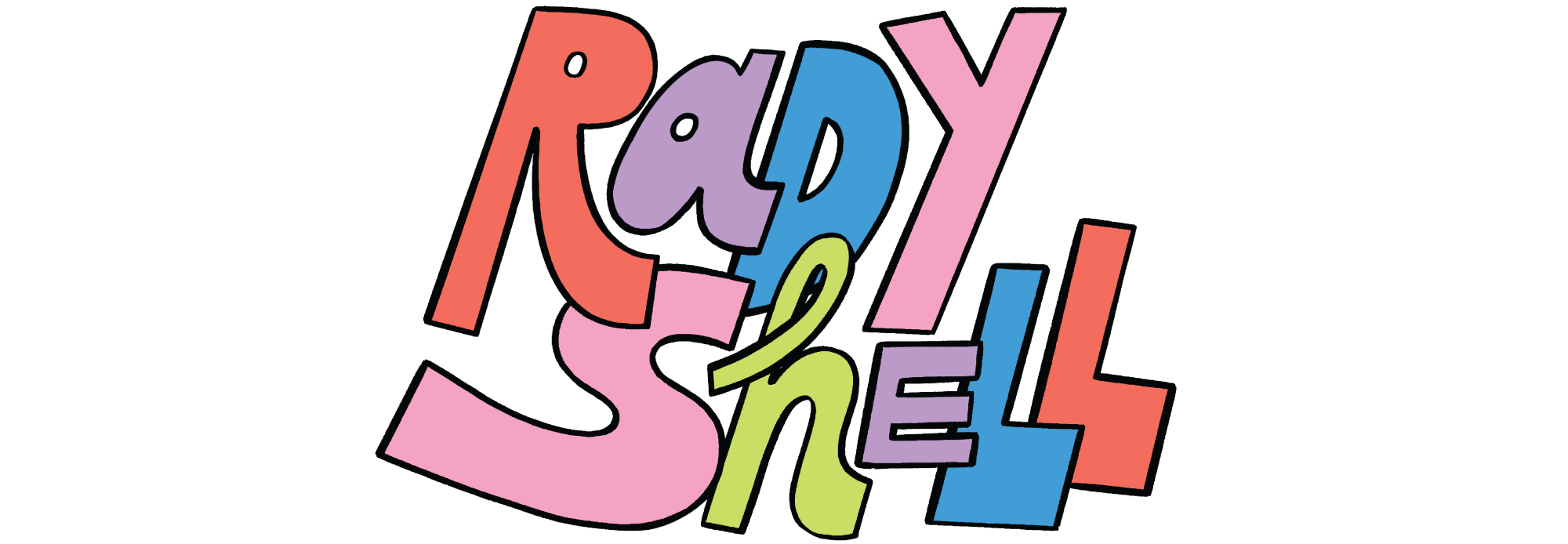
I have a hard time imagining a more pleasant place to see an outdoor concert. Well, maybe the Red Rocks Amphitheater outside Denver. But on the West Coast? I’ll take this sleek bayside shell in downtown San Diego. And I’ll try not to be resentful that nobody thought of this while I lived down there.
9. Deetjen’s Big Sur Inn
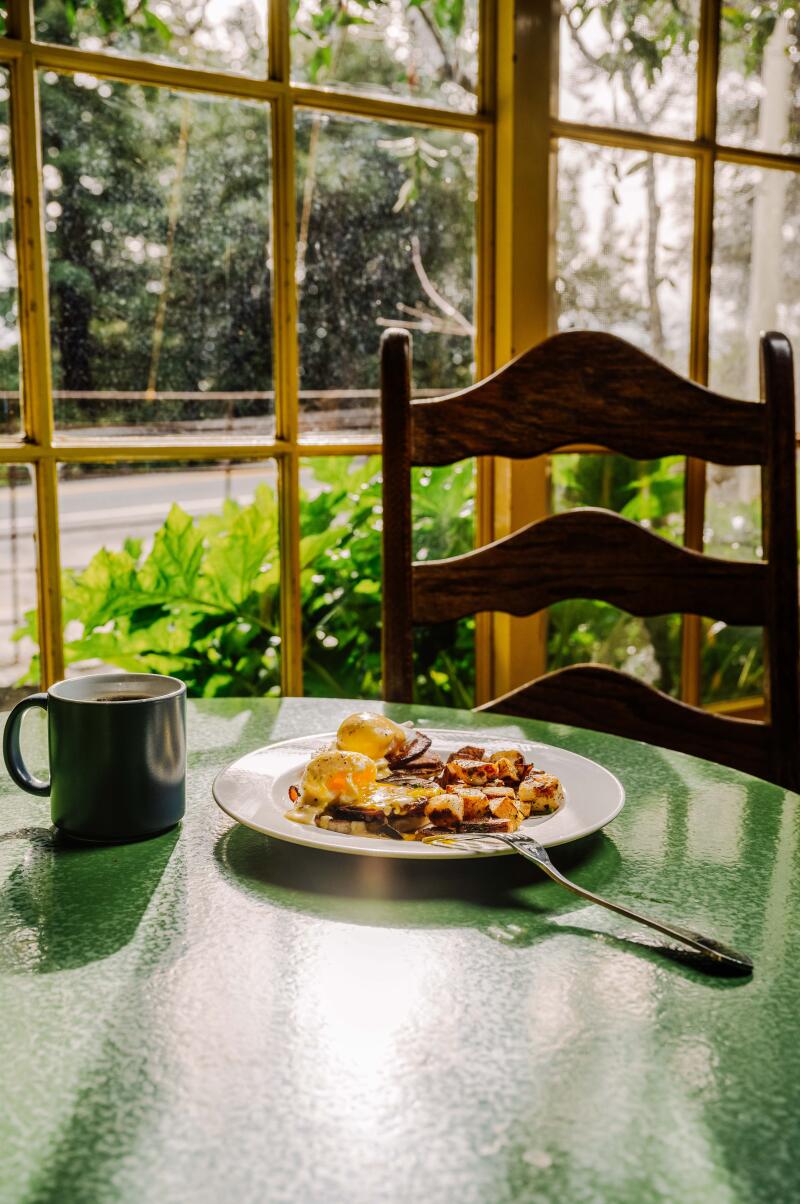
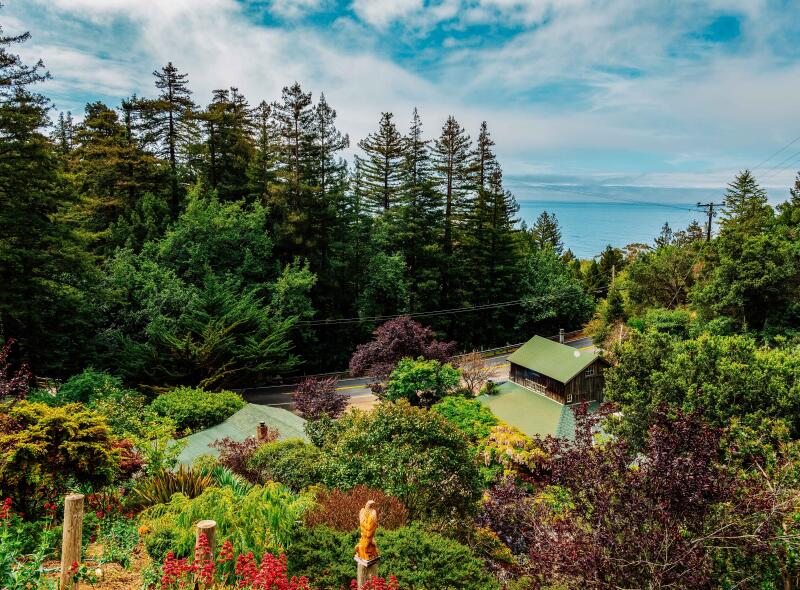

Deetjen’s Big Sur Inn in Santa Cruz, Calif., Tuesday, April 19, 2022 in Santa Cruz, Calif., Tuesday, Jan. 3, 2023. (Nic Coury/For The Times) Deetjen’s Big Sur Inn in Santa Cruz, Calif., Tuesday, April 19, 2022. (Nic Coury/For The Times) Deetjen’s Big Sur Inn in Santa Cruz, Calif., Tuesday, April 19, 2022. (Nic Coury/For The Times)

What are we going to do about Highway 1? Since that coast road was built on the slopes of Big Sur in the 1930s, we’ve treasured it. But as any acrophobe, geologist or engineer could tell you, those slopes crumble and slide relentlessly. Year after year, Caltrans moves mountains to keep that two-lane road navigable. Then comes another slide. Since January 2023 it’s been impossible to drive from San Simeon to Big Sur via the coastal route. (Caltrans announced partial reopening May 16. Check before you go. ) Whenever I worry about the highway, I think of Deetjen’s, which is basically a roadside time capsule clad in weathered wood. It opened about the time the highway did and won over generations of road-trippers with its rustic rooms and restaurant. Before Helmuth Deetjen died in 1972, he set up a nonprofit organization to keep the place running in old-school fashion. I’ve been stopping there since the 1980s. You have to call to make a reservation. And when you get there, you have to expect paper-thin walls along with the Norwegian woodwork, the crackle of the fireplace and the portrait of Deetjen on the wall. It’s a priceless place. And Nepenthe and the Henry Miller Memorial Library are just down the road. We just can’t take Deetjen’s or that road for granted.
8. Yosemite Valley
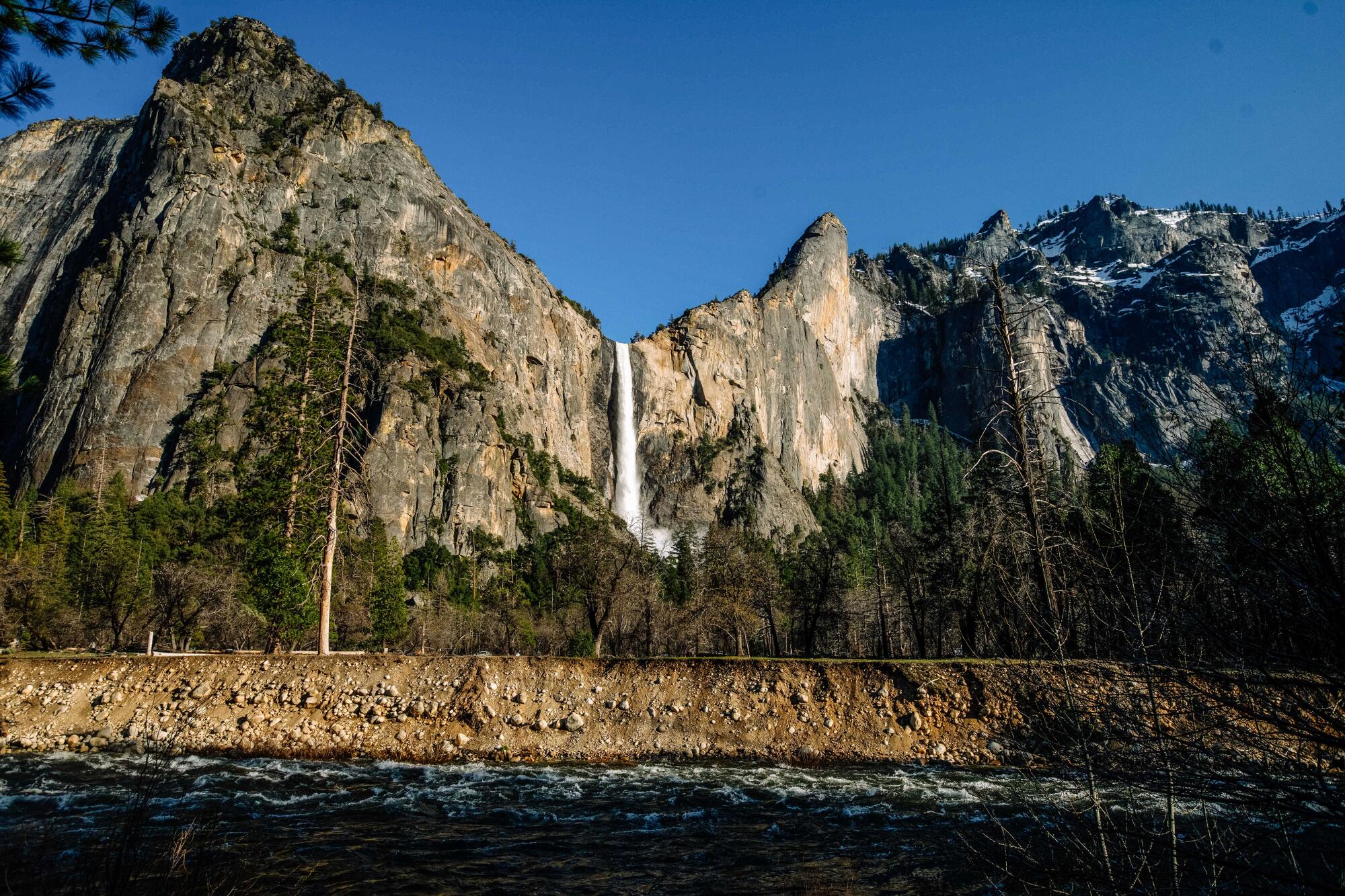
Bridalveil Fall and the Merced River Thursday, April 27, 2023, inside Yosemite National Park.
(Francine Orr / Los Angeles Times)

Does this need explaining? Probably not. If you’re arriving from the south, you emerge from the long, dark Wawona Tunnel to see El Capitan and Half Dome looming above a green, wet world of its own. Waterfalls roar left and right. The valley stretches for seven miles, framed by granite walls that Ansel Adams had to shoot and Alex Honnold had to climb. The Merced River meanders through. Even if you don’t have $600 to spend a night in the Ahwahnee Hotel, you can pop by for a snack, gaze up at painted rafters that go back to 1927 and warm yourself by one of the big fireplaces.
7. Venice Beach
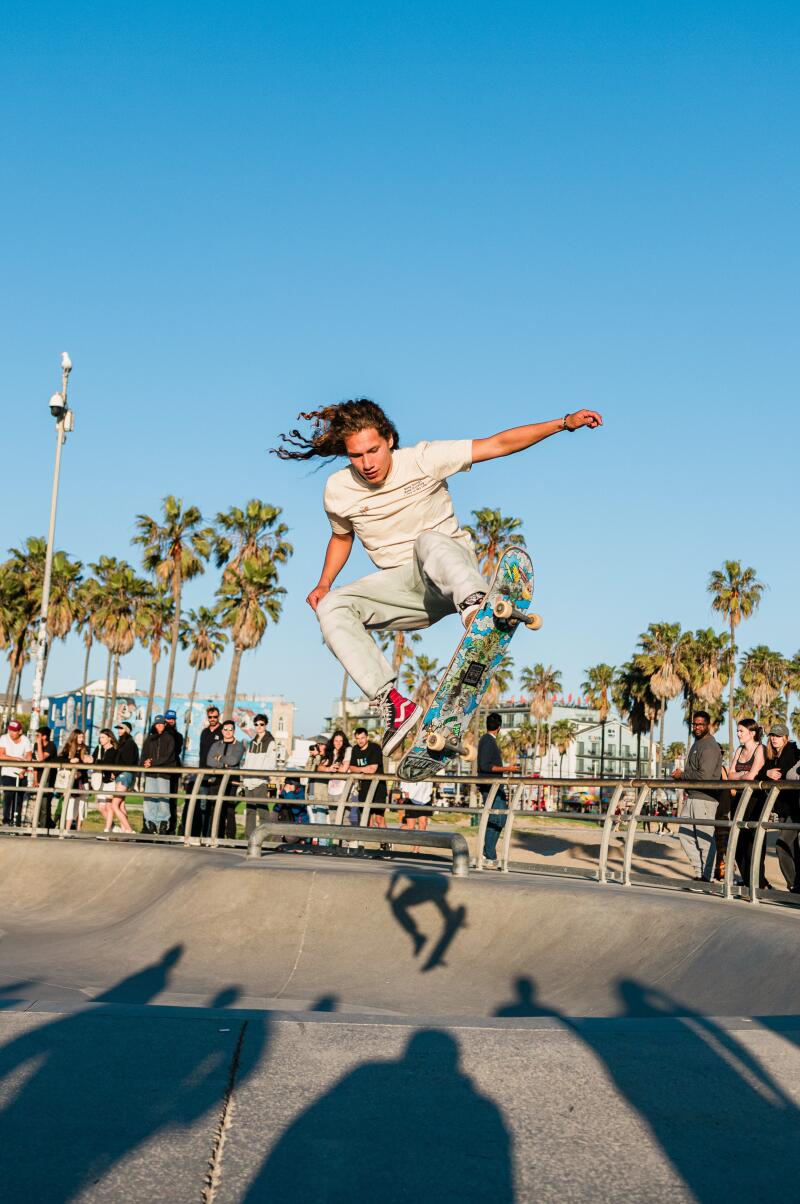
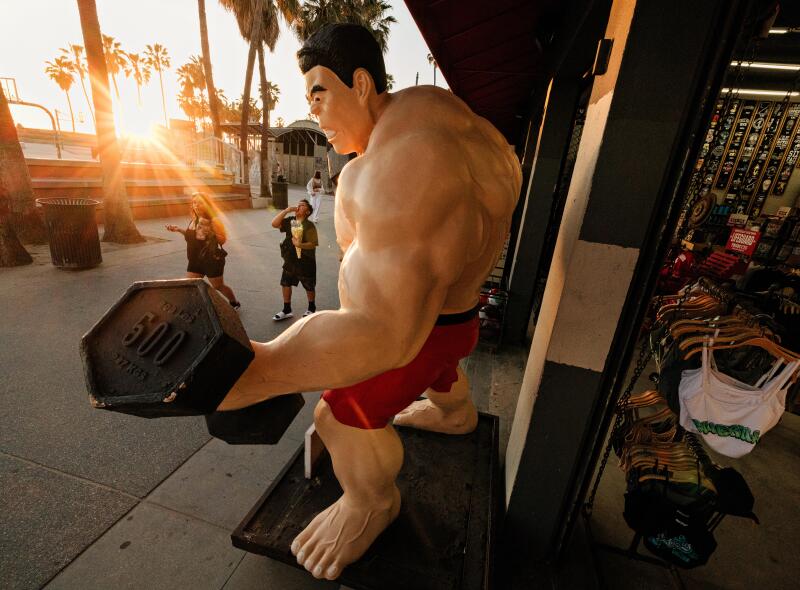
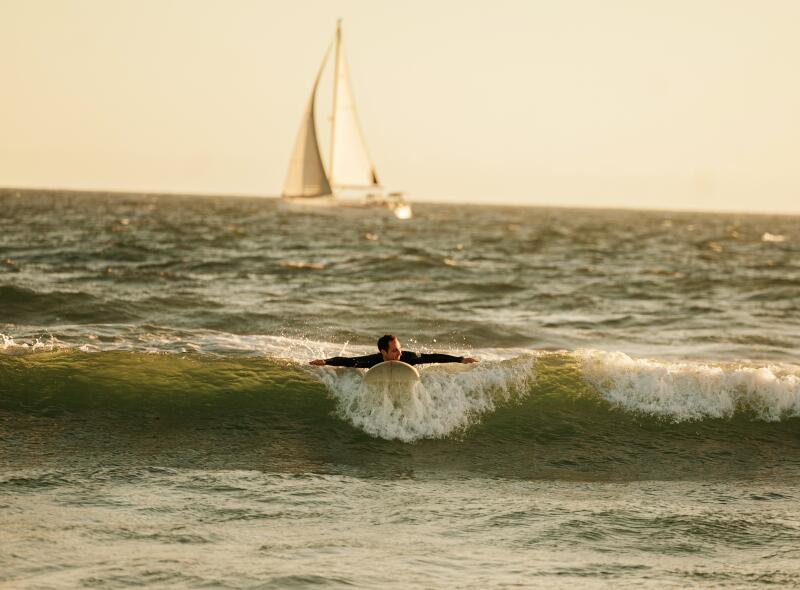
Venice, CA – April 03: A man throughs a trick at the skate park at Venice Beach on Wednesday, April 3, 2024 in Venice, CA. (Jason Armond / Los Angeles Times) (Jason Armond/Los Angeles Times) Venice, CA – April 03: People enjoy a day at Venice Beach on Wednesday, April 3, 2024 in Venice, CA. (Jason Armond / Los Angeles Times) (Jason Armond/Los Angeles Times) Venice, CA – April 03: A man surfs at Venice Beach on Wednesday, April 3, 2024 in Venice, CA. (Jason Armond / Los Angeles Times) (Jason Armond/Los Angeles Times)

Yeah, I know. There’s plenty to lament in Venice. But when you hit that beach at the right time on the right day, it feels so emblematic of Southern California. On my last visit, the sun was just setting. My wife, Mary Frances, and I checked out the skateboarders, chatted with a few artists who were selling work along the sidewalk and did a double take at the Shul on the Beach (a.k.a. Pacific Jewish Center), an Orthodox synagogue where worshipers were just gathering for a Friday night Shabbat meal.
6. The whales of Baja’s lagoons
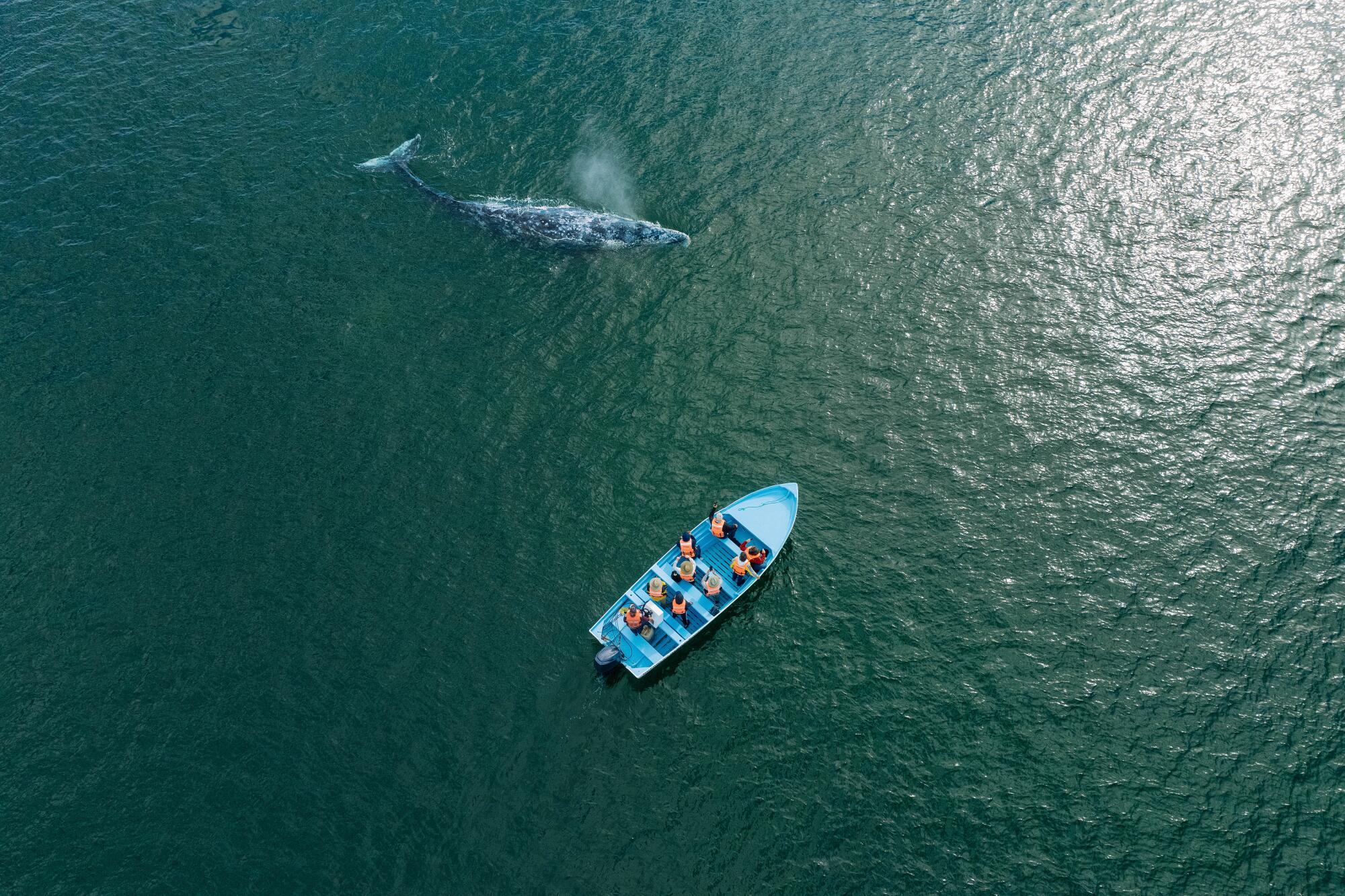
Tourists watch from a panga as a gray whale surfaces and spouts a misty jet of vapor at the Laguna Ojo de Liebre (a.k.a. Scammon’s Lagoon) on Sunday, Jan. 8, 2023 in Guerrero Negro, Baja California Sur.
(Brian van der Brug / Los Angeles Times)
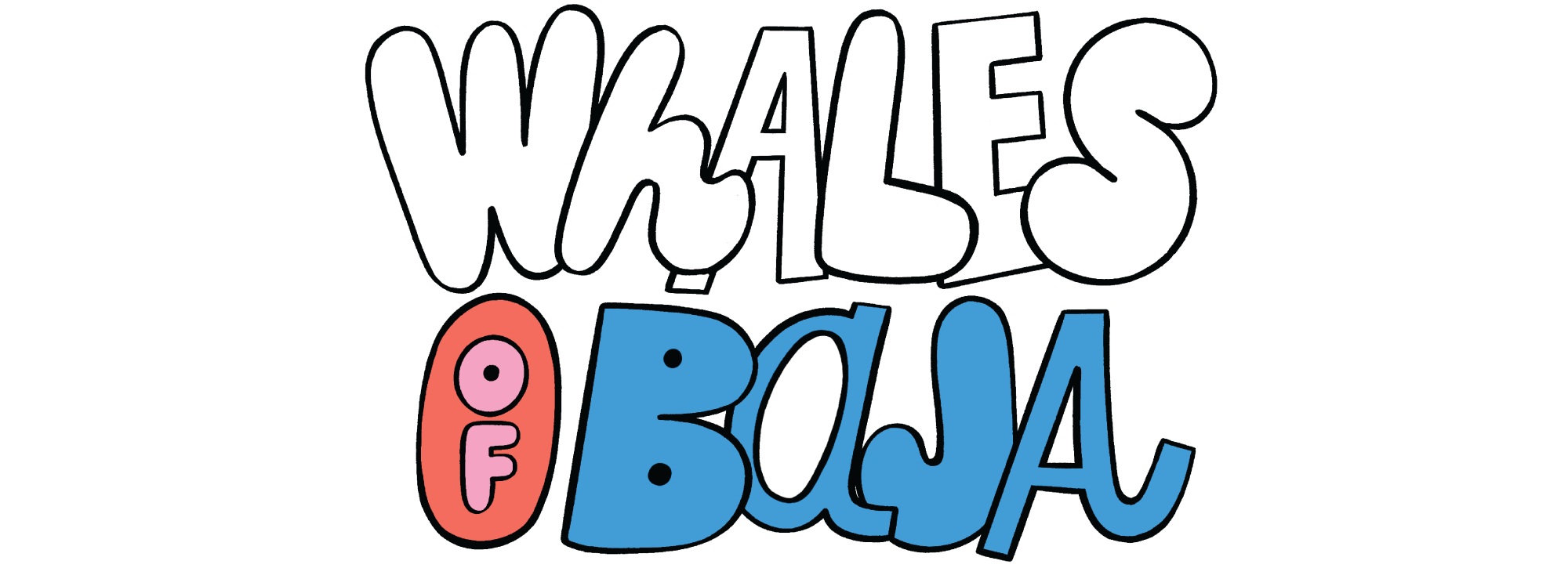
It’s one thing to watch migrating gray whales off the Southern California coast, standing at the rail of a big boat, looking for spouts in the distance and perhaps drawing within 100 yards. It’s something else when you’re in a panga on the waters of a southern Baja lagoon — usually Ojo de Liebre (Scammon’s) or San Ignacio. These immense creatures, the cows and and the calves, get so close sometimes, it feels intimate. And maybe a little scary. The adults weigh up to 90,000 pounds.
5. Ferry Building and waterfront San Francisco

The Ferry Building in San Francisco, Calif., Friday, April 12, 2024. (Nic Coury / For The Times)
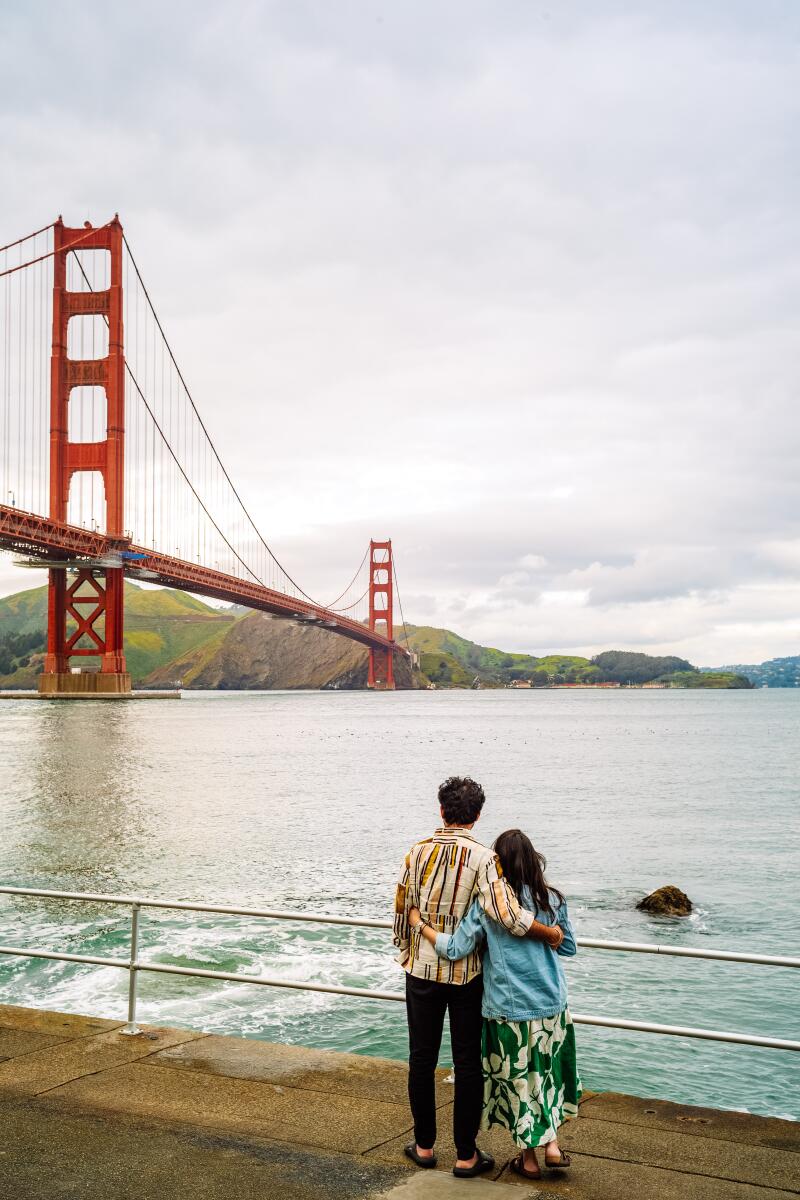
A couple looks at the Golden Gate Bridge from Fort Point in San Francisco. (Nic Coury / For The Times)

I’m trying to think of a more successful architectural resurrection than San Francisco’s Ferry Building. And failing. Picture that 1898 waterfront building in the 1920s, when there was no Bay Bridge and no Golden Gate Bridge and up to 50,000 people per day were commuting by ferry. The Ferry Building at the foot of Market Street was the center of the Bay Area’s nervous system. Then the bridges went up, commuters abandoned the ferries, the building was rehabbed into ugly offices and decades passed. Finally, in the aftermath of the 1989 Loma Prieta quake, San Francisco leaders launched a plan to revive the building. It reopened in 2003 as a foodie-oriented restaurant and retail space, a thousand times more interesting to me than the souvenir shops of Fisherman’s Wharf and Pier 39 (although at least you get the sight and sound of sea lions there). Apart from the food, it’s got great views of the Bay Bridge. (And with luck, that bridge’s nightly light show, which went dark last year, will resume in early 2025.) I think of the Ferry Building and the Golden Gate Bridge as the bookends of the waterfront.
4. Hidden Valley, Joshua Tree National Park
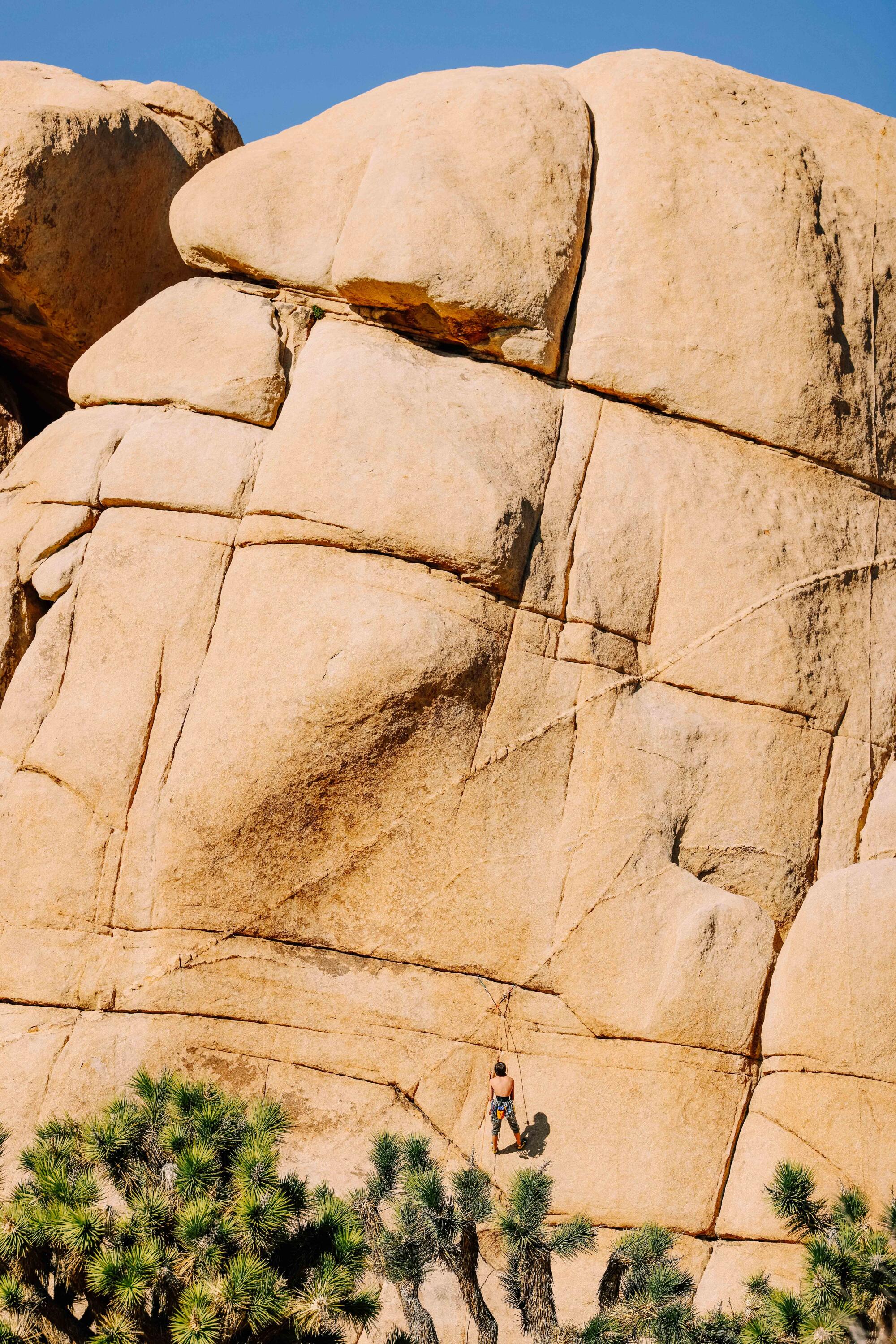
A rock climber is seen at the Hidden Valley campground inside Joshua Tree National Park.
(Dania Maxwell / Los Angeles Times)

I’m not a rock climber or a boulderer. But I’m a sucker for sunrises and sunsets in the desert. And when that golden-hour light hits the jumbled boulders in Hidden Valley, it’s hard to resist.
3. Pike Place Market, Seattle
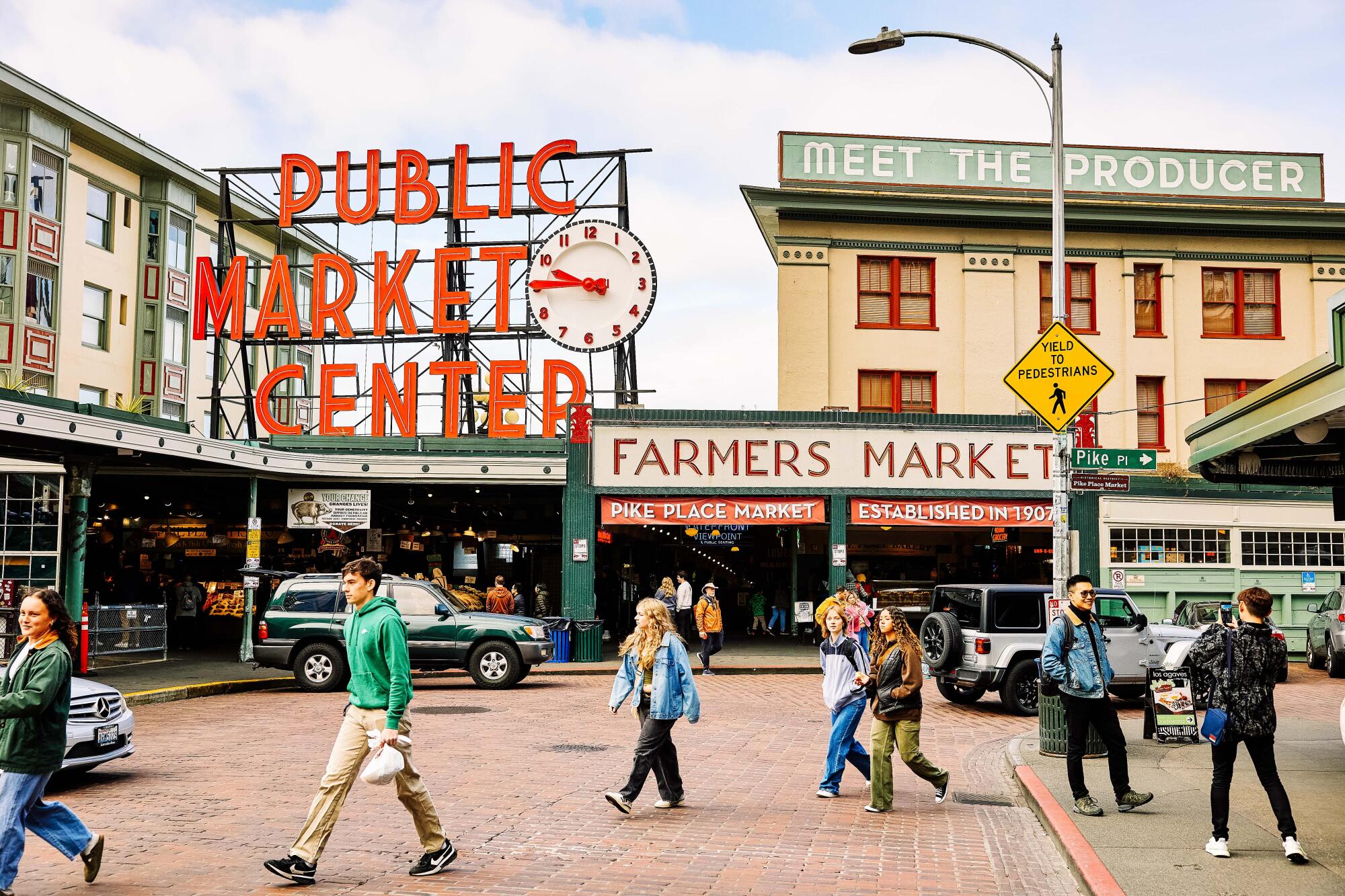
A view of Pike Place Market in Seattle, Washington.
(Amber Fotus / For The Times)
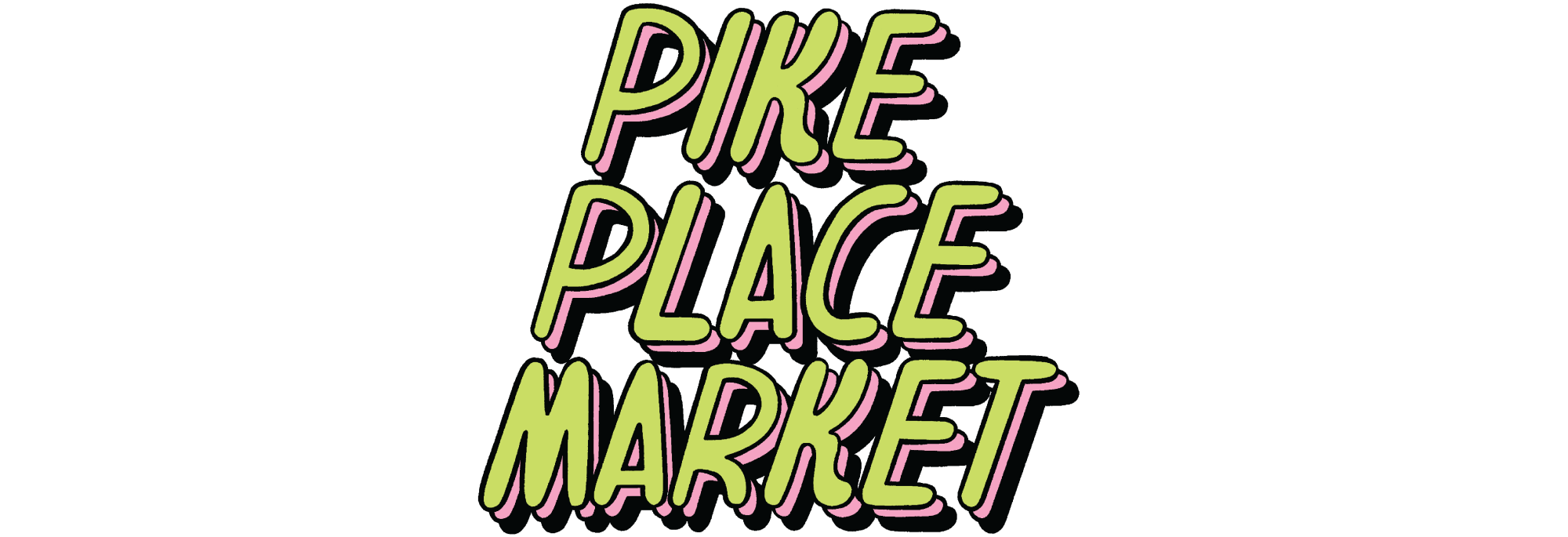
This is always the first place I want to go in Seattle, a spot where people, colors, flavors and scents all come together. I walk past the mirrored bar of the Athenian restaurant, where my buddy Rick and I had beers in 1986, my first time in town. I go down below to make sure the bubble-gum wall is still in place. I mourn at the spot where the newsstand used to be. I kick myself for failing to buy an incredibly cool cigar-box guitar from the Soul Cat Guitar guy when I had the chance. (I thought I’d have another chance at his market stall when I visited in January, but he wasn’t there that day.) I listen to buskers and eat unhealthy snacks. I stick my head in the anarchist collective bookshop (Left Bank Books), which has somehow lasted 51 years. And like every other tourist, I linger near the fishmongers so I can see them flinging fish and hollering at each other.
2. Capilano Bridge Suspension Park, Vancouver
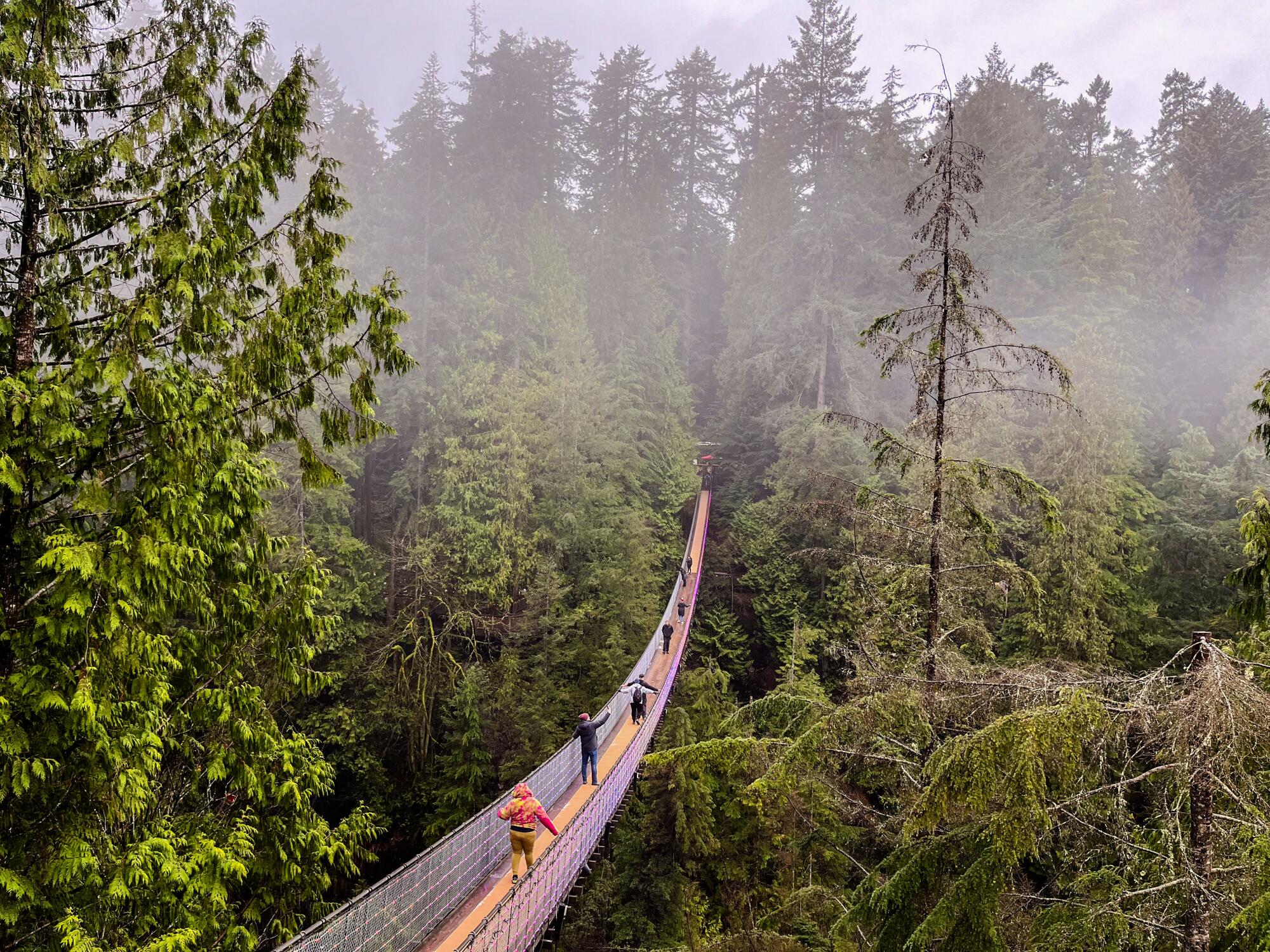
Capilano Suspension Bridge Park, Vancouver.
(Christopher Reynolds / Los Angeles Times)

On my first visit, a few years ago, it was raining and the park was packed. I wondered if the bridge would be closed. Nope. Open, and prone to slightly jiggle as I stood 230 feet above the Capilano River, surrounded by tall trees and mist. When I returned in February, it was snowing, the park was nearly empty and the bridge was still open. The vibe was part “Twin Peaks,” part “Indiana Jones and the Temple of Doom.”
1. Badwater in Death Valley

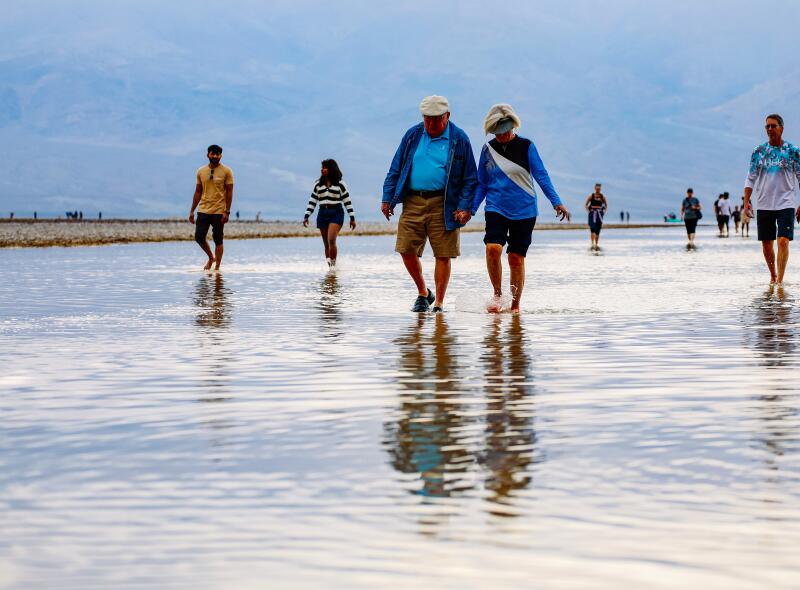
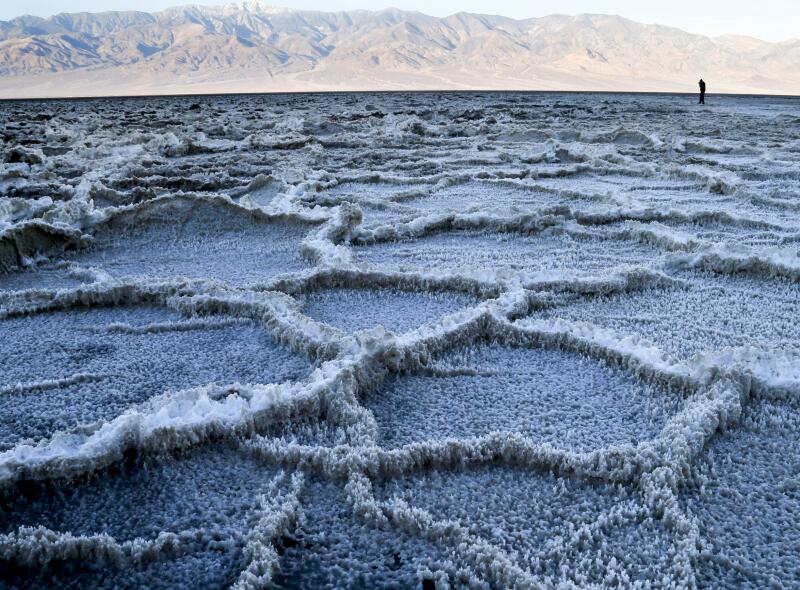
Mike “Mish” Shedlock kayaks the calm waters of Manly Lake at sunrise in Death Valley. (Robert Gauthier / Los Angeles Times) Park visitors kayak, paddle board and wade knee deep in Lake Manly in Badwater Basin. (Robert Gauthier / Los Angeles Times) Unique salt structures form in the Badwater Basin at Death Valley National Park where water combines with the natural salt deposits at 282-feet below sea level, as seen in 2014. (Mark Boster / Los Angeles Times)

Badwater is hot and dry enough to kill you pretty quickly, but as long as you have water to drink, a little shade and a way out, you’ll probably live and have a story to tell. On my first visit, a summer day about 30 years ago, Death Valley was even hotter than usual, around 115 degrees. The power had gone out at our Furnace Creek hotel. Rather than crowd into the marginally cooler hotel pool with scores of young children (and their urine, most likely), I headed with my wife and friends for the vast, flat, salty, dry lake floor of Badwater with a Wiffle ball and bat. The game didn’t last long, but there are photos: Except for our 20th century leisurewear, we looked like biblical figures in the process of being turned to pillars of salt. So last year, when rains washed out roads, closed Death Valley National Park for months, refilled the lake bed and transformed the basin into a great big mirror, I was eager to get back there.
Within days of the park’s reopening, I got to Badwater for sunrise and came back again at sunset. No Wiffle ball. Just the big sky, the mountains reflected in the lake and a handful of fellow travelers in silhouette at water’s edge. To those bold few who managed to kayak in Death Valley for the three winter weeks that it was possible, I envy you. I don’t know if I’ll ever see that lake again — as of May 1, it was just a few inches deep and shrinking fast — but now I have two layers of Badwater memories to carry with me.
Lifestyle
In pursuit of radical honesty, 'Jerrod Carmichael Reality Show' delivers ambiguity

Jerrod Carmichael in Jerrod Carmichael Reality Show.
HBO
hide caption
toggle caption
HBO

Jerrod Carmichael in Jerrod Carmichael Reality Show.
HBO
Peruse any online thread discussing Jerrod Carmichael Reality Show, the disquieting HBO series created by and starring the titular comedian and filmmaker, and colorful descriptors like “pretentious,” “mega narcissist,” and “self-righteous piece of [redacted]” are bound to appear.
“This show seems kinda invasive,” one observer noted on Reddit. “… I’m not sure what the obsession is with public humiliation … About a year ago, I was very much a fan of his honesty and what seemed to be [a] down to earth personality but it looks like it’s morphed into the narcissistic cry for help.”
Carmichael earned a lot of good will from his 2022 breakout standup special Rothaniel, in which he — among other things — came out publicly as gay and processed his mom Cynthia’s devout homophobia. It launched him into the “mainstream”; that is, a stratosphere where one wins prestigious awards, guest hosts Saturday Night Live, and makes headlines for easily agitating the ever-crotchety elder statesman Dave Chappelle.

He was easy to root for because he treated the performance like a therapist’s couch, a safe space where he could break through the silence that encourages shame and deceit. It was different from, but in the lineage of, Richard Pryor’s recounting of his own drug addiction in Live on the Sunset Strip – confessional, blunt, and refreshingly relatable to those who’ve shared a similar experience, delivered in the way only a gifted and self-aware comedian can.
But Reality Show practices an entirely different mode of candor. On camera, Carmichael cheats on his boyfriend Mike and later lies about it during their couples therapy session. He misses a friend’s wedding because he makes a pit stop to get a hot dog along the way. (He was supposed to be the best man.) He goads his parents Joe and Cynthia into having raw, painful discussions about their once-private lives and tightly held beliefs.
All of this is done in service of what he sees as a greater good: radical honesty, which he in turn hopes will lead to stronger bonds with his loved ones. Yet for some, the show has morphed the perception of him from that of an artist valiantly speaking the truth to an exhaustingly selfish crusader for a very specific truth — his own. And whether or not he succeeds at repairing his fractured relationships is only partially answered by Reality Show‘s finale, which aired Friday.

Carmichael in Rothaniel, his 2022 special.
HBO
hide caption
toggle caption
HBO

Carmichael in Rothaniel, his 2022 special.
HBO
Reality Show stands apart
If Rothaniel was presented as catharsis, Reality Show arguably functions as exploitation. It’s one thing to process grief, pain, and pathos through your art; it’s utterly baffling to directly involve the sources of that pathos in your artistic process, particularly when they seem formidably resistant to even acknowledging themselves as the source.
This isn’t the first time. In 2019, Carmichael released two HBO documentary specials that also featured him in conversation with his family, Home Videos and Sermon on the Mount. Home Videos is where he first tested the waters to see how his mom would react to him coming out to her. On camera, he offhandedly dropped in an admission that he’s hooked up with men but stopped short at identifying as gay. Cynthia barely acknowledged the unexpected disclosure.
As Carmichael told Dave Holmes for Esquire, the silence from his parents after coming out is what pushed him to create Reality Show in the first place: “The lack of acknowledgment is what made me go, ‘Okay, I’ll turn the volume up.’ How do I make it as extreme as possible? It’s testing the limits of their cognitive dissonance.”
The extremities make up a strange gumbo: One-part old-school docu-style reality TV (in a different era, this could’ve been True Life: “My Mom’s a Homophobe”); a dash of trashy celeb-reality (think Being Bobby Brown or Britney & Kevin: Chaotic); and another part self-referential prestige experiment (Sarah Polley’s Stories We Tell or How To with John Wilson).
For all its cross-cultural parallels, though, Reality Show stands apart. To his credit, while he has near-total creative control as the creator, co-executive producer, and star, he’s willing to show himself being challenged by his own cognitive dissonance. Within the first few minutes of Reality Show, he makes his MO plain: “Cameras make me feel more comfortable, I like this — it seems permanent, and it feels really dumb to lie.” And yet, we later watch him lie on camera about being monogamous during a couples therapy session with Mike, proving he struggles to adhere to his own ethos, at least at first. (As the season carries on, he and Mike try out non-monogamy together, and seem to find that it works for them.)
The reality TV genre feeds heartily upon the judgmental instincts of its viewers. It needs audiences to engage with it as gossip fodder and opinion-generator, encouraging those who tune in for the “real”-ish drama to scoff at the foolish personalities, cheer on the likable heroes, and boo the flamboyant antagonists. Carmichael clearly understands the format – unscripted in theory, though manipulated and edited to make the “real” fit more neatly into a dramatic arc – and bends it to his will. And while the crudest entries in the reality genre tend to bring up social issues and prejudices either unintentionally or superficially, with Reality Show, Carmichael chooses to purposefully expose the issues in the name of raw, unfiltered honesty.
“I think this will be good for you”
In the mid-2010s, he co-created and starred in the loosely autobiographical network sitcom The Carmichael Show. Far more subversive than its multi-camera, live studio audience format let on, it positioned him as a nihilistic provocateur who revels in frank, multi-generational conversations on an assortment of hot-button issues with his fictional family: abortion, assisted suicide, mass shootings, depression. (It’s frequently, and aptly, been referred to as a modern-day All in the Family.)
A Season 2 episode focuses on Jerrod’s dad Joe (David Alan Grier) as he prepares to deliver a eulogy for his own father, who was abusive and abandoned the family long ago. Jerrod doesn’t understand why Joe would want to honor him – “Am I the only one who remembers what a deadbeat that man was?” – but Joe feels bound by the tradition of never speaking ill of the dead. Jerrod counters that if Joe is going to give the eulogy, he should at least tell the truth about who the man was: “I think it will be good for you.”
YouTube
That line could’ve been the tagline for Reality Show, which finds Carmichael butting up against the people in his life — many of them older — who bristle at his desire to revisit painful memories from the past. In the fourth episode, Jerrod attempts to have a straightforward conversation with his real dad Joe, and pelts him with a rapid-fire series of questions about the double life Joe led for years, which included having a secret second family with another woman.
“Would you say you loved [the other woman]? Or was it just like, sexual, or was it — ’cause it was a long time, what – like, 40 years of a relationship? Was it hard every time? Did you feel like a bad person?”
Joe, clearly uncomfortable, begins to shut down and insist that the past is the past, but Jerrod keeps pressing him. Joe snaps back: “Why are you digging into this so deep, son?”
I think it will be good for you.
“Is this gonna be on your special?” Joe wearily asks. “This is hard for me to discuss on cameras.”
Doing this in front of cameras is the only way Carmichael, a late-30s millennial who came of age in the early years of oversharing – The Real World, blogging, Facebook – knows how to have (or force, really) these conversations. It’s telling that, spliced throughout some of the episodes, Reality Show includes footage from the Carmichael family’s home videos going back decades, some of which Jerrod himself shot as a kid with a camcorder. The grainy images root the present-day points of conflict firmly in an “authentic” past, suggesting that this project was predestined, something this artist has unintentionally been working toward for decades.
“Your option is no option,” Jerrod snaps back at Joe around that campfire, “so don’t criticize the way I do it. If the cameras help me, then they f—— help. But your way is nothing, your way is silence, your way is death.”
Eventually, Joe is tapped out. “You’ve expressed yourself … can I go home?”
The camera gives Jerrod courage, a security blanket to wear while attempting to address the distance between him and Joe, yet it’s not yielding the results he’s looking for. It’s hard not to wonder if the cameras are actually hindering him in the long run, keeping him stuck on the false hope that others around him – who have thus far only proven rigid in their stances – might open up to him the way he wants them to.
Bending his truth for his mom
At the core of Reality Show, nestled beneath the layer of a mission for radical truth, is Carmichael’s determination to radically alter worldviews. “Could my mom change?” he ponders at one point. He surmises, “It’s reason to keep fighting.”
“I’m not going to sit here and lie to you,” his uber-Christian mom Cynthia insists in the finale, while repeating yet again that she’d “prefer” that he isn’t gay. (In an earlier episode, she likened homosexuality to being a murderer.) Cynthia might be the most authentic of all the figures in Reality Show, unapologetically herself. His impasse with her has less to do with avoiding the truth than it does the fact that her truth stands in direct opposition to his.
She visits Jerrod and Mike in New York City for Mother’s Day weekend, and he takes her to a queer-friendly Harlem church, where the pastor pushes back against her insistence that the Bible condemns homosexuality. Later they meet with a queer therapist for joint counseling. Neither of these experiences sees her budging from her stance: “I’d like for him not to be gay,” she tells the therapist during one-on-one time, adding matter-of-factly, “I can go further [with my acceptance], I just choose right now not to … I don’t want to.”
Later, when she reiterates her desire for him to find a woman to settle down with, he tries meeting her on her terms: He consents to letting her attempt to pray away the gay in front of him. She’s truly giddy; it might be the happiest she appears in the entire show. “I love you. That blessed my heart,” she says, satisfied. She’s completely unaware (or unbothered?) by how her son’s body seems to recoil out of deep discomfort.
In an effective bit of dramatic editing, the prayer immediately cuts to Carmichael remarking on the moment during a standup performance. “She was so happy that I let her do it. I immediately regretted it.”

Jerrod Carmichael in Jerrod Carmichael Reality Show.
HBO
hide caption
toggle caption
HBO

Jerrod Carmichael in Jerrod Carmichael Reality Show.
HBO
Throughout Reality Show, Carmichael imagines standup snippets as if they were a more elevated version of a confessional booth, that reality TV convention where the cast members get to narrate their perspective of the story unfolding. It’s devastating watching him concede to her, to allow her this delusion. But there’s life as-it-happens and life as reflected upon later. And it’s important to note this doesn’t come out of nowhere; this has been years in the making, with long periods of absence and occasional heated exchanges, some of which were captured on camera. Through his extravagant attempts at familial reconciliation, Jerrod’s ultimately realized he has to bend his truth a little to maintain some sort of relationship with Cynthia.
I think it will be good for you.
“You know what I realized I need is a reason to believe everything will be OK,” he adds. “I’m always looking for that. When I was young, I found it in my mother. And now, I’m finding a lot of that in [Mike].” As he says this, a montage of images flurry by: Cynthia packing her bags in her hotel room to go back home to North Carolina; a younger Cynthia smiling for the camera in a home video; Mike teaching Jerrod how to swim in a pool.
A revelatory viewing experience
And yet the finale also suggests a small but perceptible shift in Jerrod’s relationship with Cynthia, and proves the show is more than a masochistic, navel-gazey affair (though it’s certainly that, too). This is soap opera verité in its most anarchic state — almost certainly a terrible idea for everyone involved, but quite possibly a learning experience for those observing from the outside looking in.
The post-credits sequence is jarringly optimistic. The final image is of Mike and Cynthia laughing together in her kitchen in North Carolina a few months later; she even places her hand affectionately on his back for a quick moment. We have no idea if Cynthia still believes Jerrod and Mike are on equally sinful footing with murderers, though the scene implies something within her has softened.
It’s unclear what we’re supposed to make of this – that maybe Jerrod’s persistence has actually helped him reconnect with his family? If so, it’s worth considering Reality Show a success for what he’s said he wanted out of this project, even if there’s reason to be disappointed in the concessions he may have had to make to get there.
The impulse to question why any of this needed to happen in such a public manner doesn’t completely recede with this conclusion, though maybe it makes the show’s existence easier to digest. In any case, the ending is hardly pat — real life plays out on its own terms away from the cameras — and Reality Show‘s frank depiction of a Black queer man attempting to push back against his family’s culture of silence moves the needle even further than Rothaniel did. He’s provided viewers with an imperfect guide for how to have difficult but necessary conversations with the people they care about (preferably without dropping a camera crew in the mix).

Clay and his mom Margarita on Love is Blind.
Netflix
hide caption
toggle caption
Netflix

Clay and his mom Margarita on Love is Blind.
Netflix
Oddly enough, Reality Show shares a bit in common with the most recent season of the absurdist Netflix dating series Love Is Blind, which featured Clay, a young Black man who also dealt with unresolved trauma stemming from his own dad’s infidelities in a very public manner. The show’s silly “social experiment” — above all designed for maximum gawking and entertainment — inadvertently stumbled into a candid and relatively honest discussion about Black masculinity and generational trauma.
At Clay’s doomed wedding ceremony to AD, his mom Margarita, no longer married to his dad Trevor, gave the series its truest moment thus far, when she explained to Trevor how his actions were affecting their son all these years later. “Your past and things that you witness, it’s part of your DNA. It’s part of your inside. And if you don’t get freakin’ help, you bring that s— into the next thing.”
Clay brought his baggage into Love Is Blind and Jerrod brought his into Reality Show. Disarray ensued and feelings were hurt. There’s a silver lining though: In making highly questionable decisions for all the world to see, they forced conversations that need to be had but often aren’t, and perhaps some viewers may come away feeling inspired to confront similar issues in their own lives. Even amid all the mess, some honesty managed to break through the silence.
-

 Education1 week ago
Education1 week agoVideo: Police Use Pepper Spray on Protesters on G.W.U.’s Campus
-

 Politics1 week ago
Politics1 week agoOhio AG defends letter warning 'woke' masked anti-Israel protesters they face prison time: 'We have a society'
-

 Politics1 week ago
Politics1 week agoBiden’s decision to pull Israel weapons shipment kept quiet until after Holocaust remembrance address: report
-

 World1 week ago
World1 week agoA look at Chinese investment within Hungary
-

 News1 week ago
News1 week agoThe Major Supreme Court Cases of 2024
-

 Finance1 week ago
Finance1 week agoSpring Finance Forum 2024: CRE Financiers Eye Signs of Recovery
-

 World7 days ago
World7 days agoIndia Lok Sabha election 2024 Phase 4: Who votes and what’s at stake?
-

 News1 week ago
News1 week agoTornadoes tear through the southeastern U.S. as storms leave 3 dead





